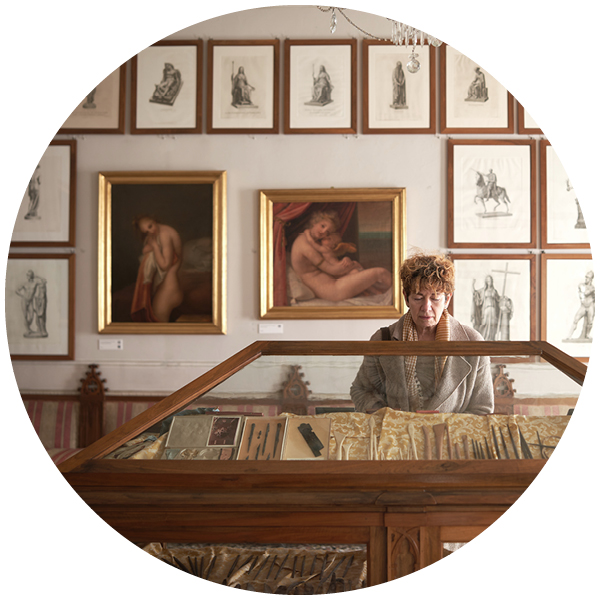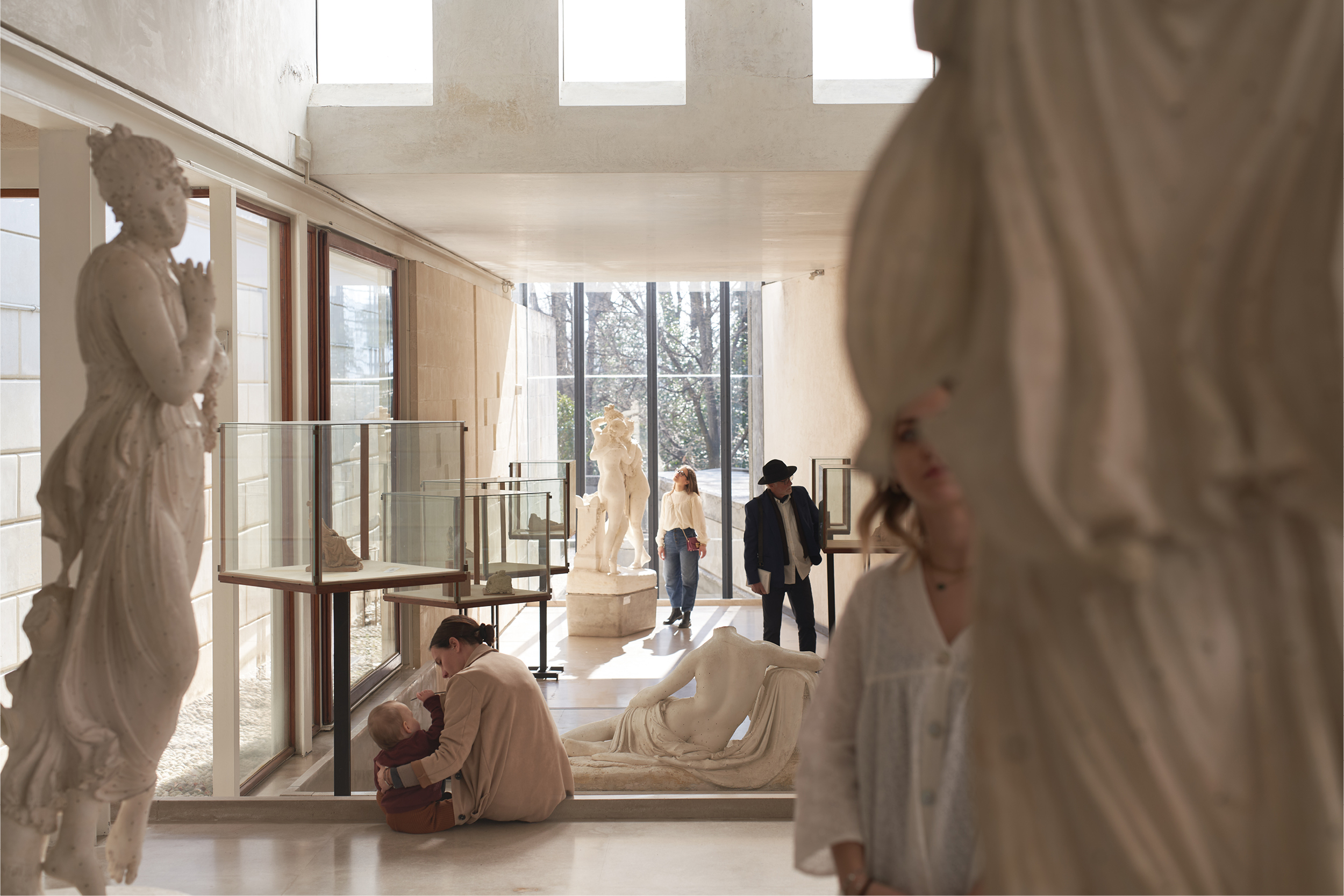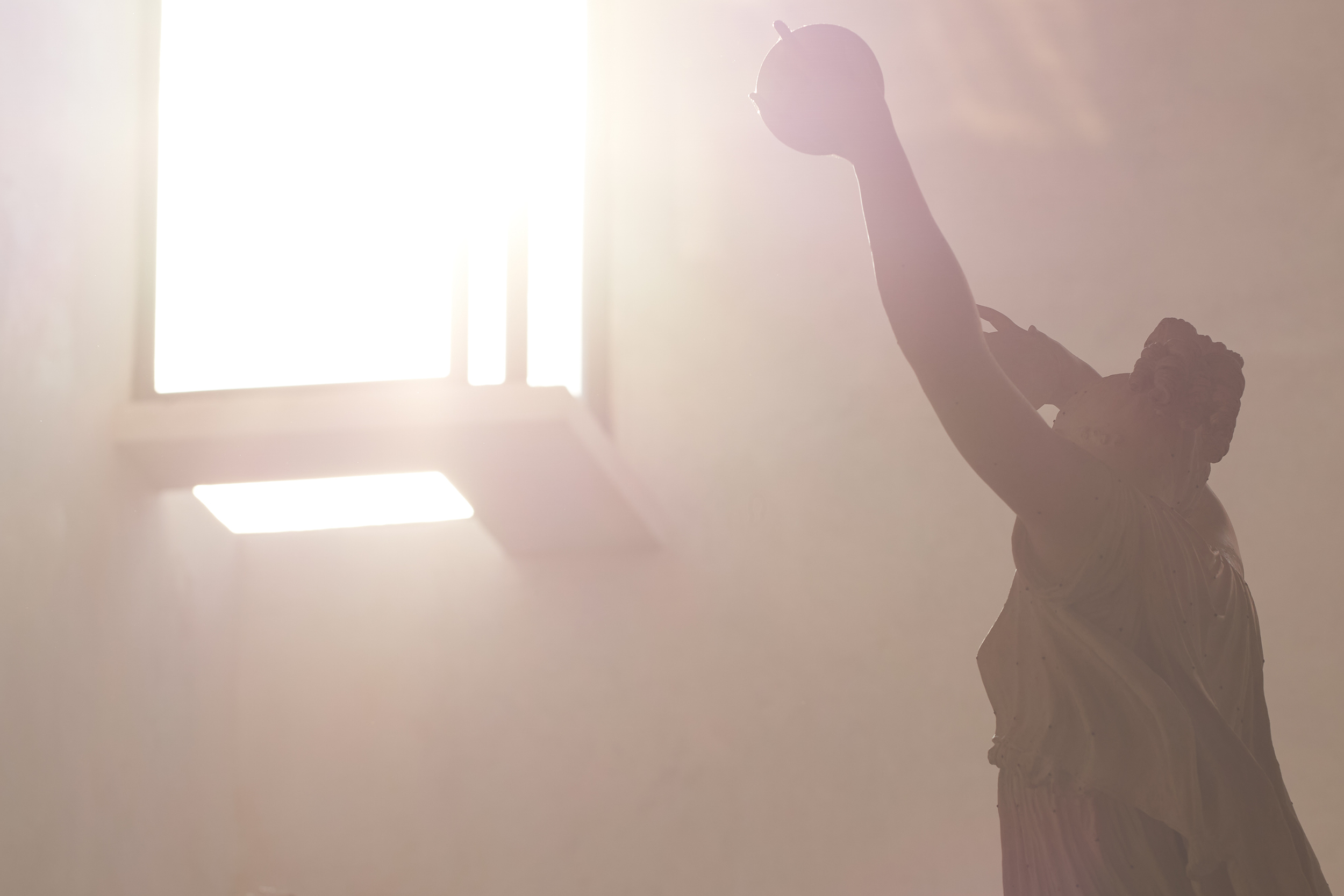Scarpa wing
Built between 1955 and 1957, and widely recognized as one of Carlo’s Scarpa most relevant projects, the Scarpa wing completed the already immense Cavovian heritage and allowed for more plaster models, including Hercules and Lichas and Theseus Defeating the Centaur, to be exhibited in the artist’s birthplace. The Venetian architect was able to create a structure in perfect harmony with the pre-existing 19th century basilica and the surrounding landscape. He designed a squared room that was originally intended for the huge model for the sculpture Theseus. He then added a trapezoidal body with one of its walls parallel to the basilica’s side, creating a sort of telescope that points to the The Graces placed at the end of the room.
However, the key point of his project was the attention to the surrounding natural landscape. The natural light flowing from above and the clever positioning of angular glass windows reconcile the choreographic bodies inside with the green hills outside, evoking in the observer a sense of perfection.
One more peculiar aspect of the structure designed by Carlo Scarpa is the presence of a stretch of water at the foot of The Graces. The reflection of sunlight on water creates endless variations of the shape and the three bodies seem to be moving all day long, playing with lights and creating shadows in the open space around them.
The formal inauguration of the new wing took place on the 15th of September 1957, on occasion of the 200th anniversary of the artist’s birth. However, construction works kept going and, in the following two years, many interventions and improvements were made.

The Graces, in Scarpa Wing
Light for Carlo Scarpa
Light takes center stage in the Scarpa Wing and gives life to a comprehensive interpretation of the Canovian plasters. The model for The Graces, Cupid and Psyche standing, The Dancers, and all those terracotta sketches displayed in newly-designed cases which, thanks to the lighting, can finally be valued and extensively studied by the critics.
The museum is a “living” being in which light is clearly the main character, and spills into the visitor who can move arounda stage of different floors, surfaces, materials. The space is filled with so much light that expands and modifies the scene day and night.
As Carlo Scarpa said: “The problem I faced when rearranging the Gypsotheca was the light: it was not about paintings, but sculptures, and sculptures were not marble or wood, but plaster cast […]. And the sun, moving on a sculpture, never has a negative effect as it happens inside a room when it reaches only certain points and some paintings are left in the shade, yet there is nothing making works of art wonderful like powerful sunlight”.

Inside the turret in the Scarpa wing. In the foreground you can admire George Washington.

Detail of the art pieces in the Scarpa wing. In the background you can admire Canova’s Self-Portrait as a Sculptor
Pieces of art and visitors enlightened by the natural light in Scarpa wing | ph credits Otium/Favotto

Light filters through Scarpa’s prisms, detail

Nineteenth-century Wing
Nineteenth-century Wing

Stables
Stables








